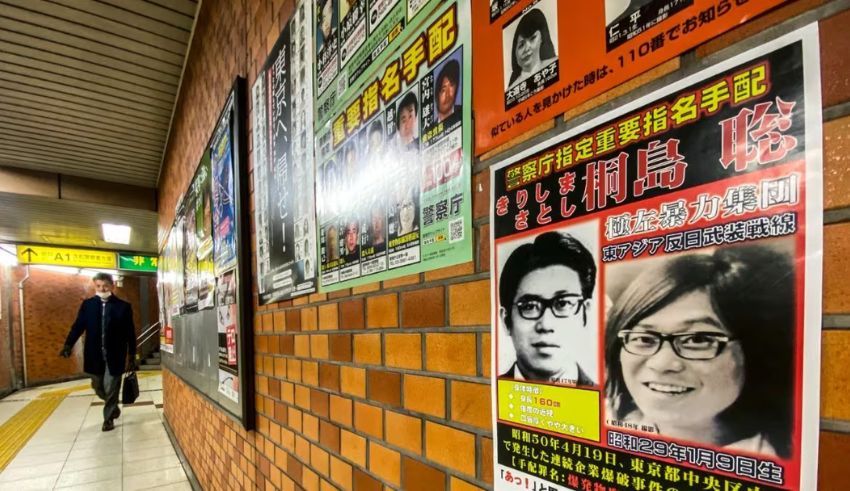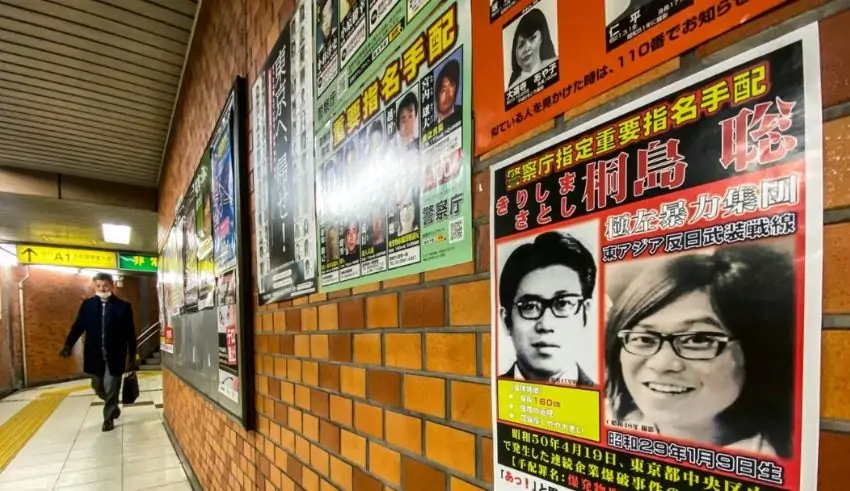

(C) News18
Japan’s most wanted fugitive, Satoshi Kirishima, who had been on the run for 49 years for his involvement in a series of deadly bombings in the 1970s, has been finally identified by a DNA test, the police announced on Wednesday. Kirishima, who died of stomach cancer last month at the age of 70, had confessed his true identity to the hospital staff shortly before his death, saying he wanted to “meet his death with his real name”. The police, who had been searching for Kirishima for decades, conducted a DNA analysis on his remains and confirmed that he was indeed the elusive terrorist.
Kirishima was a member of the East Asia Anti-Japan Armed Front, a radical left-wing terrorist group that sought to destroy capitalist Japanese society and its ties with the US. The group was responsible for a series of bombings targeting major Japanese corporations and government buildings in Tokyo in 1974 and 1975, killing 11 people and injuring more than 500 others. The group claimed that the attacks were a retaliation for Japan’s imperialist and colonialist past and its support for the US involvement in the Vietnam War.
Kirishima was allegedly involved in five of the bombings, including the most notorious one at the headquarters of Mitsubishi Heavy Industries on August 30, 1974, which killed eight people and injured 378 others. He was also suspected of planting and detonating a homemade bomb that damaged a building in the Ginza district on April 18, 1975. He managed to evade arrest and escape from the police, and his whereabouts remained unknown for almost half a century.
Kirishima lived a double life as a construction worker under the alias of Hiroshi Uchida, and resided in the city of Fujisawa, near Tokyo, for almost 40 years. He worked as a day laborer and later at a construction company, and was paid in cash. He did not have a phone, a driver’s license, or a health insurance, and avoided any contact with the authorities. He was described by his neighbors as a “calm and serious” man, who sometimes played guitar in his room after drinking.
Kirishima revealed his true identity to the hospital staff when he was admitted for terminal cancer in January. He told them that he regretted his part in the attacks and that he wanted to face justice. He also denied some of the allegations against him, and provided details about his family and his organization that only he could have known. He died on January 29, before he could be arrested or prosecuted.
The police, who had been looking for Kirishima for decades, conducted a DNA analysis on his remains and confirmed that he was indeed the elusive terrorist. They compared his DNA with that of his relatives, who had cooperated with the investigation, and found a match. They also matched his fingerprints with those found at the crime scenes and on the bomb materials. The police announced the results of the DNA test on Wednesday, and said that they had referred the bombing cases to the prosecutors.
The DNA test has put an end to one of Japan’s longest and most frustrating manhunts, and has shed light on a dark chapter of Japan’s history. However, it has also raised questions about how Kirishima was able to evade capture for so long, and how he was able to live a normal life under a false identity. It has also denied the victims and their families the opportunity to see justice done, and to hear Kirishima’s explanation and apology for his crimes.
Since August 2024 two group captains helped prepare by studying spaceflight at training facilities around the United States, Europe and…
South Korean President Yoon Suk Yeol has been removed from office due to issues concerning martial law. A significant shift…
On Thursday night, Milwaukee Bucks player Giannis Antetokounmpo made NBA history by becoming the first player to score 35 points,…
On Thursday, April 3, 2025 at 10:12 a.m. Beijing time, China made a successful orbit placing satellite launch of Tianping-3A…
SM Entertainment has formally ceased for Wendy and Yeri of Red Velvet. But this is not the end of their…
As President Donald Trump declared economic independence through new tariffs he placed significant harm on developing countries in Southeast Asia…
This website uses cookies.
Read More